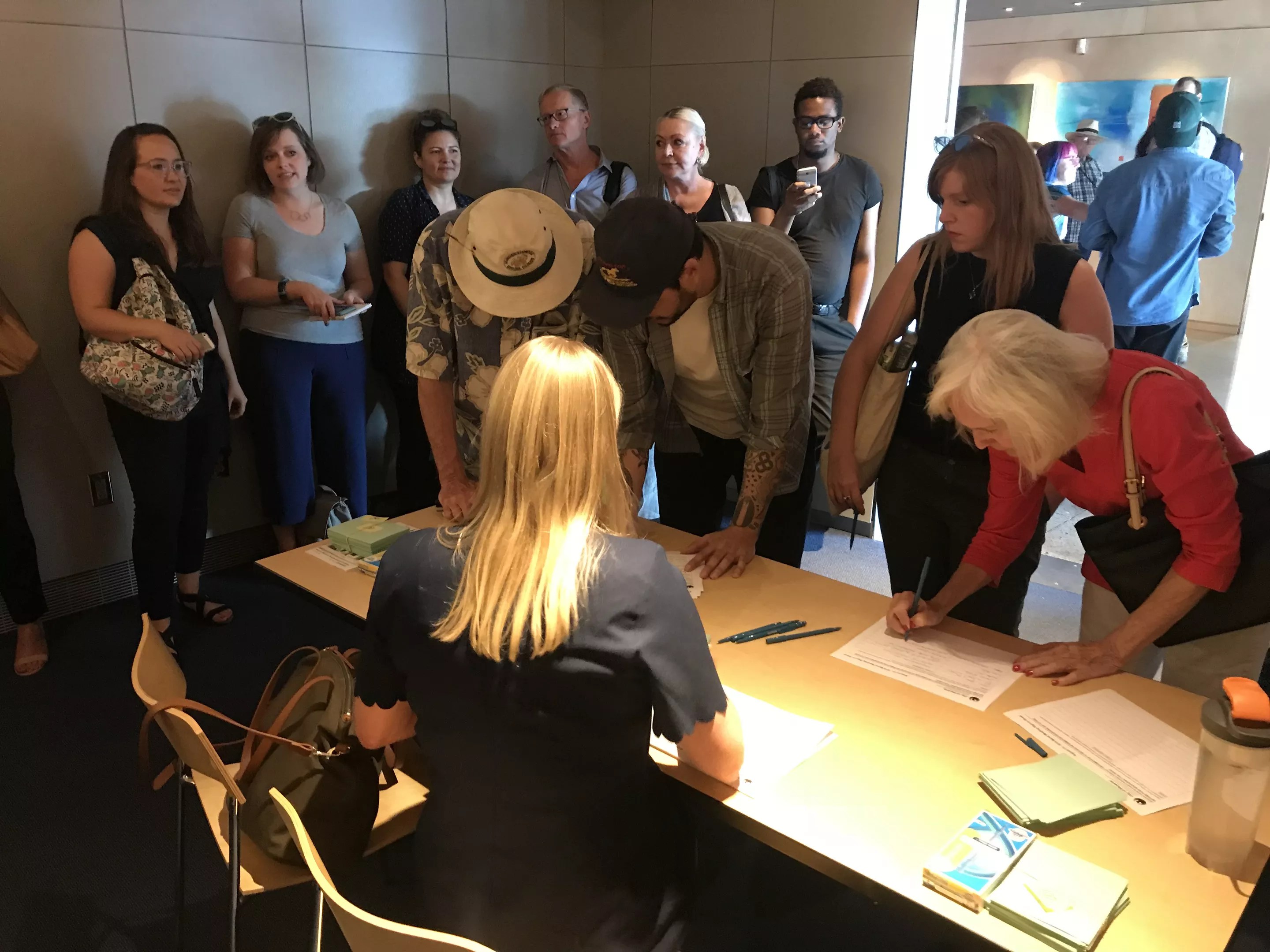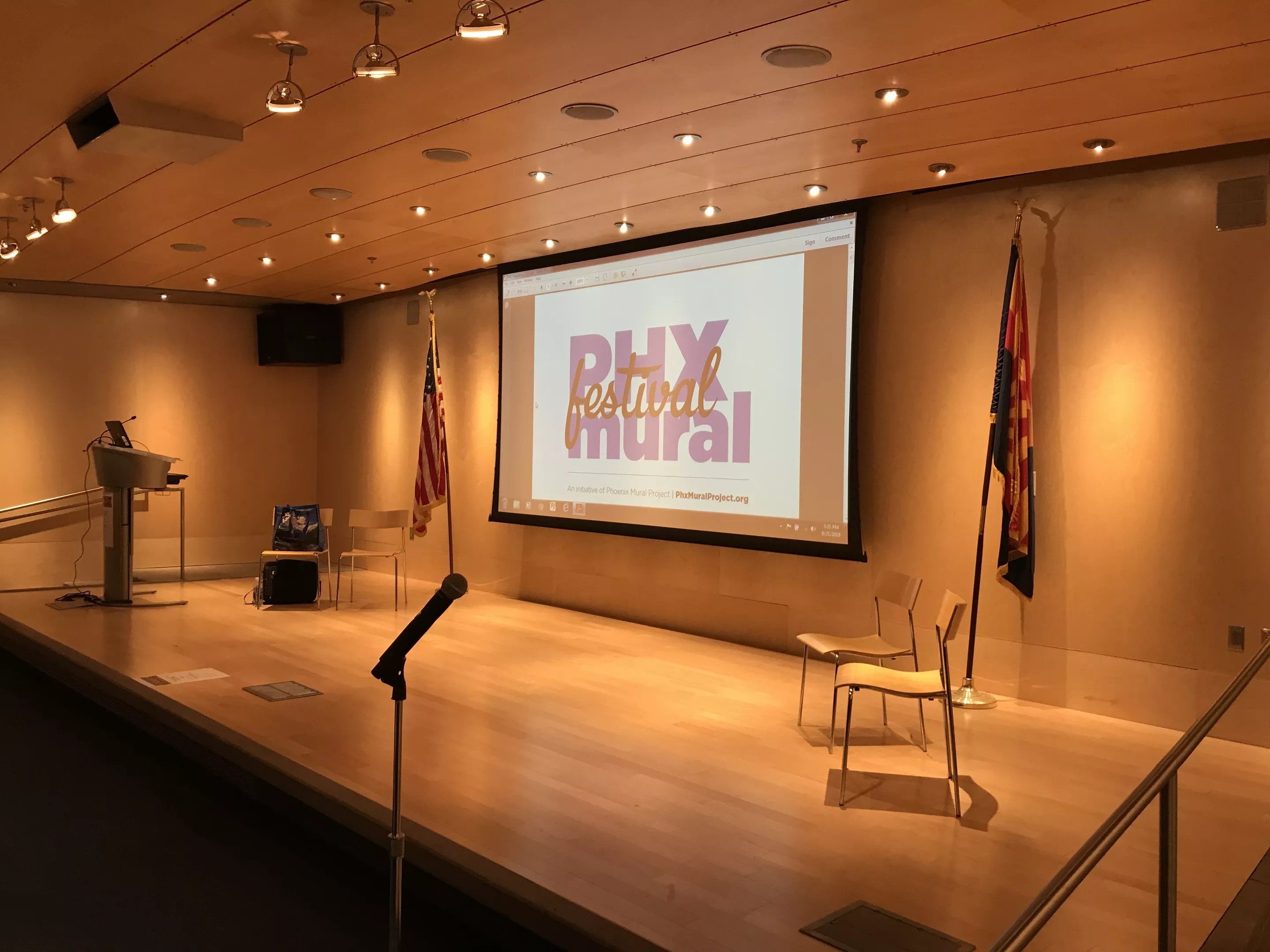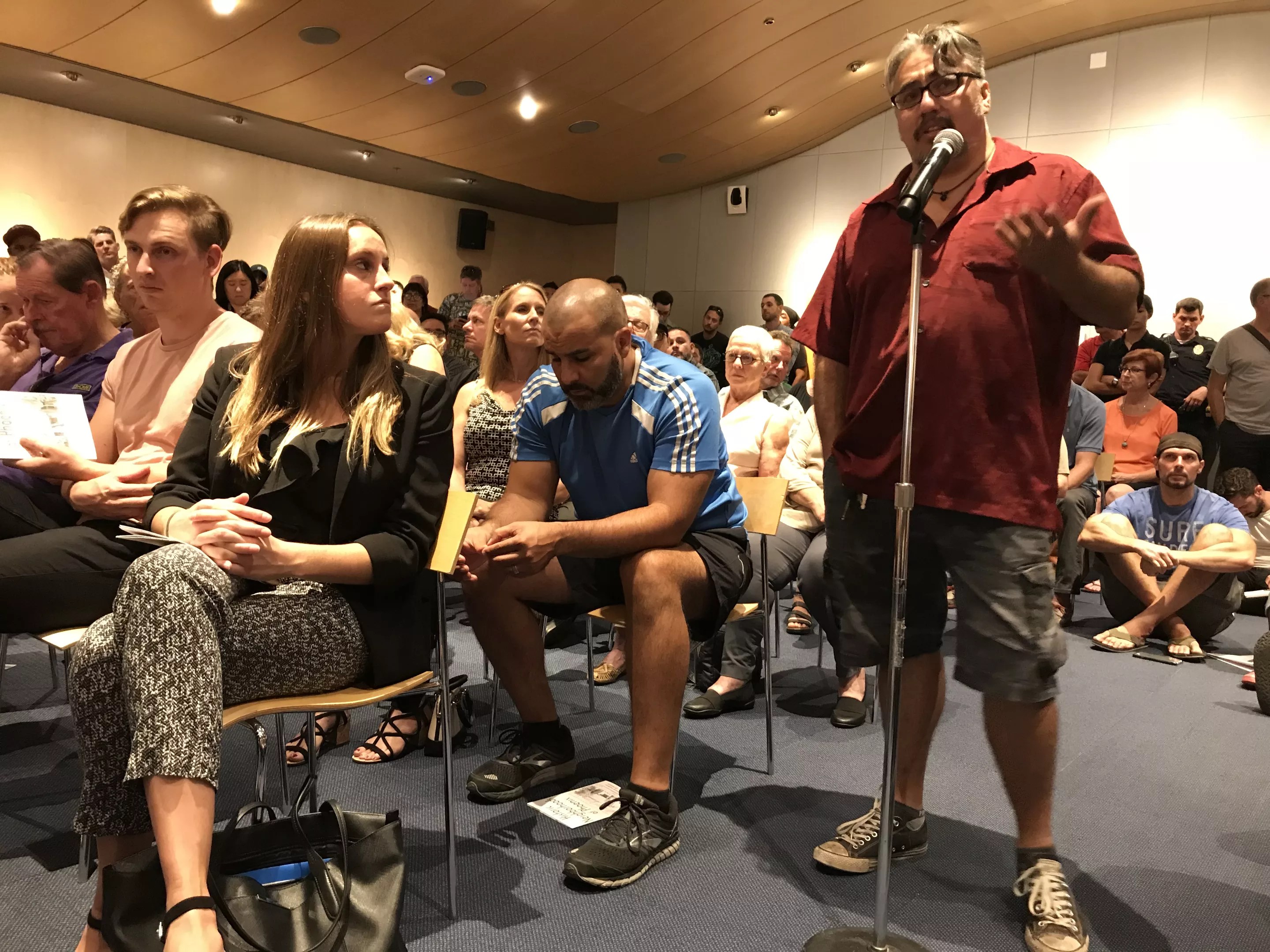
Lynn Trimble

Audio By Carbonatix
More than 200 community members showed up for Tuesday night’s meeting about murals in historic neighborhoods. The August 21 meeting, held at Burton Barr Central Library, was convened by city officials in the aftermath of a May mural festival.
The Phoenix Mural Festival was founded by Danielle Fouschée, an assistant professor of visual communication design at Arizona State University. It’s part of a larger initiative called the Phoenix Mural Project, which also documents Phoenix-area murals online.
The festival took place from Friday, May 6, to Sunday, May 8. Basically, it paired artists with homeowners or business owners who wanted mural art. The end result, Fouschée says, was 51 murals painted by more than 80 artists.
Several of those murals were painted in the Willo Historic Neighborhood, which runs from Thomas to McDowell roads between First and Seventh avenues.

Chris Boyd and Kelly Birg painted this mural along Third Avenue in the Willo historic district.
Lynn Trimble
But not everyone liked what they saw.
The city started hearing from mural opponents, as well as supporters. Both the Phoenix Historic Neighborhoods Coalition and the Willo Neighborhood Association wrote letters to the city, expressing their concerns. So the city called a meeting, giving community members a chance to weigh in on the issue.
More than 200 people attended, including several artists and homeowners who participated in the festival. First, they heard from a lineup of speakers that included Bob Cannon, GG George, and Fouschée. Cannon heads the Willo Neighborhood Association board, and George heads the Phoenix Historic Neighborhoods Association.
“It’s obvious there’s a difference of opinion,” Cannon told the crowd. “We’re here asking for guidance.”
Willo Neighborhood Association has asked the city to develop formal guidance for murals in historic neighborhoods. Murals aren’t regulated in Phoenix, although the city has been researching how other municipalities handle the mural issue.
Several city officials spoke during Tuesday’s meeting, which started at 5:30 p.m. and ran more than two hours. They included historic preservation officer Michelle Dodds, public art program director Ed Lebow, and planning and development director Alan Stephenson.

Here’s where it all went down Tuesday night, inside Burton Barr Central Library.
Lynn Trimble
Collectively, they made several points:
• The city doesn’t regulate paint, with the exception of painted signs.
• If property owners give permission, painting isn’t considered graffiti.
• Any regulation of murals would need to serve a clear governmental interest.
• You can’t regulate something that’s protected by free speech.
• Murals will not cause the loss of historic status.
“Any regulations we put in place would be grandfathered in,” Stephenson said. So, the existing murals wouldn’t be affected.
There’s no clear consensus among cities in terms of whether and how to regulate murals. Some require a permit, while others don’t. Some limit murals in historic neighborhoods or areas with single-family homes, according to Lebow. “It’s really a mixed bag,” he says.
Most of the meeting comprised community members sharing their opinions, using two mics set up in a center aisle. More than three dozen people spoke, including many who are active in the downtown arts scene – such as Catrina Kahler, Hugo Medina, Kim Moody, and Beatrice Moore.
The vast majority of those who spoke said they supported the Willo murals, and opposed regulation. Some addressed larger issues facing the city – including gentrification in areas popularized by artists.

Artist Hugo Medina was the first community member to speak during the comment portion of the meeting.
Lynn Trimble
“The only reason Phoenix became popular is the artwork and murals,” Medina said. “Downtown Phoenix is what it is because of the artists.” Medina has painted several murals around the Valley, including the Modified Arts mural that depicts an artist lamenting the impact of rampant development on the local arts scene.
Others expressed concerns about murals in historic neighborhoods, or spoke in favor of regulation. “People spending over a million dollars don’t want graffiti on their walls,” said Willo resident Lynn Watson. “It’s not fair that we should have to look at something we can’t relate to.”
For the most part, meeting participants showed respect for those with opposing viewpoints. But that wasn’t always the case. “You’re a dog,” one man shouted during Watson’s remarks.
About half the audience left before the meeting drew to a close. After it ended around 8 p.m., Fouschée and others took to social media with more mural-related comments.
For those who missed the meeting, city officials suggest sending feedback to odette.bakker@phoenix.gov by Tuesday, August 28.